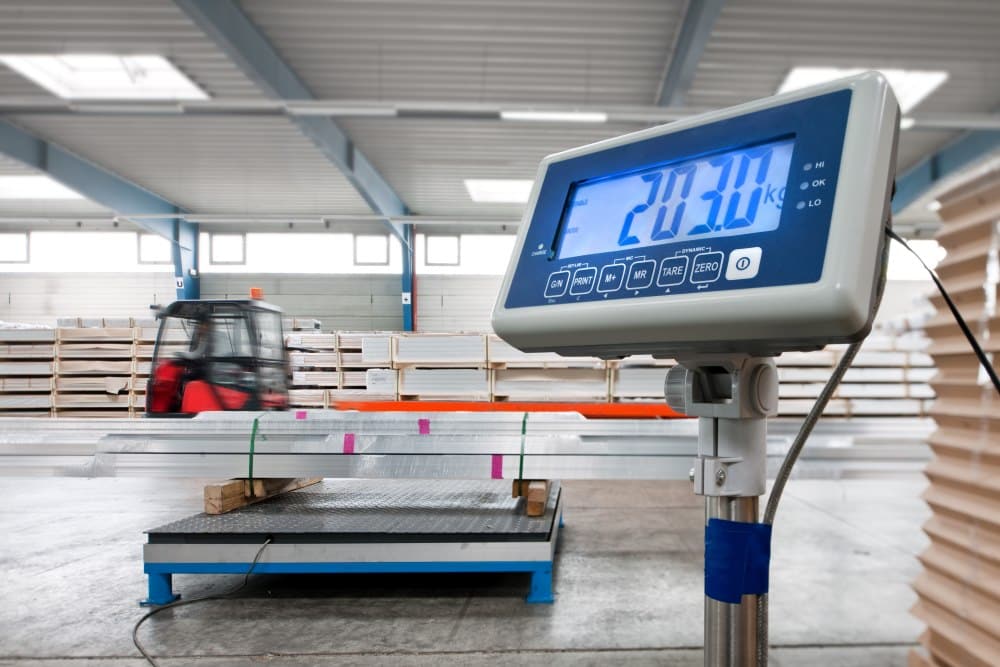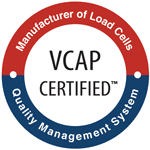
Understanding weight sensors and force measurement is key to everything running smoothly, safely and efficiently – whether you’re weighing heavy machinery or measuring tiny forces.
In this article, we’ll answer some of the common questions about weight sensors, load cells, force sensors and load sensors. We’ll break down the differences between them and show you how each one works in real-world applications so you can choose the right one for you.
By the end, you’ll know which sensor is best for your situation and why these tools are so important in industries like manufacturing, research and beyond. Whether you need precise measurements for small tasks or robust performance for big projects, this will help you find the solution.
What Are Weight Sensors?
Weight sensors, also known as commonly referred to as load cells, are devices that measure how heavy something is. They are accurate scales that can tell you exactly how much force or weight is pressing on them.
How Does a Weight Sensor Work?
- Sensing Force: When you put something on a weight sensor like a box the sensor feels the pressure or force of the box.
- Converting Force to Electrical Signals: Inside the sensor there are tiny components (often called strain gauges) that change when force is applied. These changes are converted into an electrical signal. It’s like when you step on a spring and it gets squished—except here the squish is turned into electricity.
- Reading the Weight: That electrical signal is sent to a device (like a display or a computer) that translates it into a number which tells you how heavy the object is.
Weight sensors are very precise and can measure small weights (a few grams) or heavy objects (tons of material on a truck).
What’s the Difference Between a Weight Sensor and a Load Cell?
The terms weight sensor and load cell are often used interchangeably, but they have different meanings depending on the context:
Weight Sensor
A weight sensor is a generic term that means any device that measures weight or force. This could be:
- Load cells (the most common type of weight sensor).
- Hydraulic or pneumatic sensors that use fluid or air pressure.
- Capacitive or piezoelectric sensors that measure force through changes in capacitance or electric charge.
In short, a weight sensor is a general category, and load cells are a type of weight sensor within that category.
Load Cell
A load cell is a specific type of weight sensor that converts a force (like weight) into an electrical signal. It uses strain gauges to do this. Load cells are the most common weight sensors used in industrial applications because of their accuracy and reliability.
Load cells come in many forms:
- Compression load cells: Measure weight when compressed.
- Tension load cells: Measure weight when pulled.
- Shear beam load cells: Measure force from bending or shear.
They’re used in devices like industrial scales, weighbridges and tank weighing systems.
The main difference is that weight sensor is the general term for any device that measures weight or force and load cell is a mechanical device (usually with strain gauges) that does this job with high precision.
Put simply, all load cells are weight sensors but not all weight sensors are load cells.
What Are the Different Types of Weight Sensors?
Weight sensors or load cells come in several types, each for specific uses and environments:
- Hydraulic load cells use fluid pressure to measure weight. When weight is applied, it compresses a liquid inside the sensor and the resulting pressure change is measured. They’re useful in environments where electronics might fail, such as areas with explosive hazards.
- Pneumatic load cells use air pressure instead of fluid. When weight is applied, air is compressed and the pressure change is measured. They’re used in clean environments like food processing facilities as they’re safe and resistant to electrical hazards.
- Strain gauge load cells are the most common type. They use tiny sensors called strain gauges that change resistance when stretched or compressed. These are the main two models:
- Compression load cells are designed to measure weight by compressing under the force applied. They’re used for heavy loads in applications like weighing tanks and silos and industrial scales and are very durable and can handle big weights.
- Tension load cells measure weight by being pulled apart. Imagine hanging a bucket from a rope; the load cell weight sensors measure how much force is pulling down. They’re used in crane scales and lifting equipment as they’re accurate for suspended loads.
- Shear beam load cells measure weight through a shearing motion. When weight is applied, part of the sensor bends slightly (in shear fashion) and this motion is measured. They’re used in platform scales and truck weighing systems as they’re good for evenly distributed weights.
- Single point load cells work similarly to shear beam load cells but deform by bending rather than shearing and are designed for smaller, centralized loads. They’re ideal for retail checkout scales and packaging machinery as they’re compact and perfect for small scale measurements.
- S-type load cells are shaped like an “S” and are very versatile as they can measure tension (pulling) and compression (pushing). They’re used in hanging scales and force measurement systems and are good for dynamic forces like vibrations.
- Canister load cells are designed as cylinders and measure compression by detecting changes in their structure underweight. They’re used in heavy-duty industrial applications and for tank and silo weighing and are robust and accurate for very heavy loads.
Why Understanding Weight and Force Sensors Matters for Accurate Measurements
Weight and force sensors are crucial in many industries, from manufacturing to research. While weight sensors and load cells are great for measuring weight, force sensors can measure a broader range of forces. Knowing the difference between these will help you choose the right one for your needs and get reliable performance and better results.
Knowing which sensor is right for you can make all the difference in how your system works. Whether you’re building a new setup or troubleshooting an existing one, having the right sensor in place will save you from costly mistakes and downtime. It will also make your equipment run smoothly, reducing errors that can impact safety or productivity. When you understand these sensors and their applications, you can make better decisions and keep your business running efficiently and successfully.
Find Your Ideal Measurement Solution at Massload Technologies
Are you looking to incorporate reliable weight or force measurement solutions into your operations? Massload experts are here to help you find the perfect fit for your requirements.
Contact us today to discuss your needs and take the first step towards precision and efficiency!


